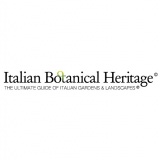
 Italian Botanical Heritage
Italian Botanical Heritage
Italian gardens: Aventino's Municipal Rose Garden
- WTI Magazine #109 Nov 17, 2018
-

 Italian Botanical Heritage
Italian Botanical Heritage
The Rose Garden of Rome is located on the slopes of the Aventine Hill, and from there you can enjoy a raised view of the Circus Maximus and the Palatine Hill.
The Rose Garden is home to about 1,100 species of roses from around the world, such as the Rosa chinensis virdiflora with its green petals, the Rosa chinensis mutabilis that changes color with the passing of the days and the Rosa foetida that emanates an unpleasant smell. Walking through the rose garden you can also admire ancient roses that flourished in Paestum and Pompeii and that are still used today as a basis for perfumed essences.
The largest area houses the collection of botanical roses, ancient and modern; the lower part, smaller, houses the areas with the roses participating in the "Premio Roma" and the collection of roses that since 1933 have won this event.
The rose garden hosts botanical roses, that is, spontaneous roses which grow in various zones, from the hottest to the coldest, but only in the Northern Hemisphere, of which 150-200 species are known. There are ancient roses, which are the result of spontaneous crossings between botanical roses or, at times, the result of the first experiments in the field of hybridization.
There are modern roses: this category includes the many varieties obtained since the end of the 1800s, with roses brought from China and other regions of the Far East. There are English roses, which are the result of the cross between ancient roses and modern roses, with the scent from the former and the bearing, the shape of the flower and the colors often soft from the latter.
There are falling roses or soil covers, which adapt to cover walls or fences, whilst, on the flat, they become "upholstering". There are miniature roses, easily cultivable in pot and therefore suitable for decorating terraces and balconies; and, finally, patio roses which can be utilized for forming a small hedges.